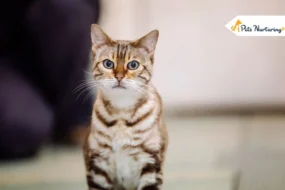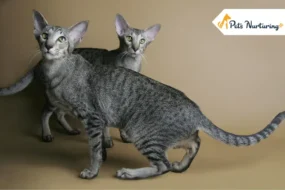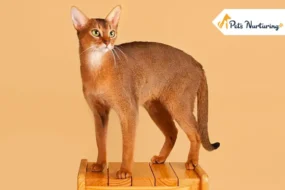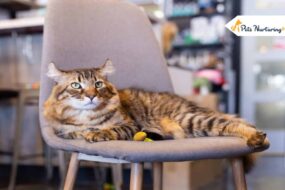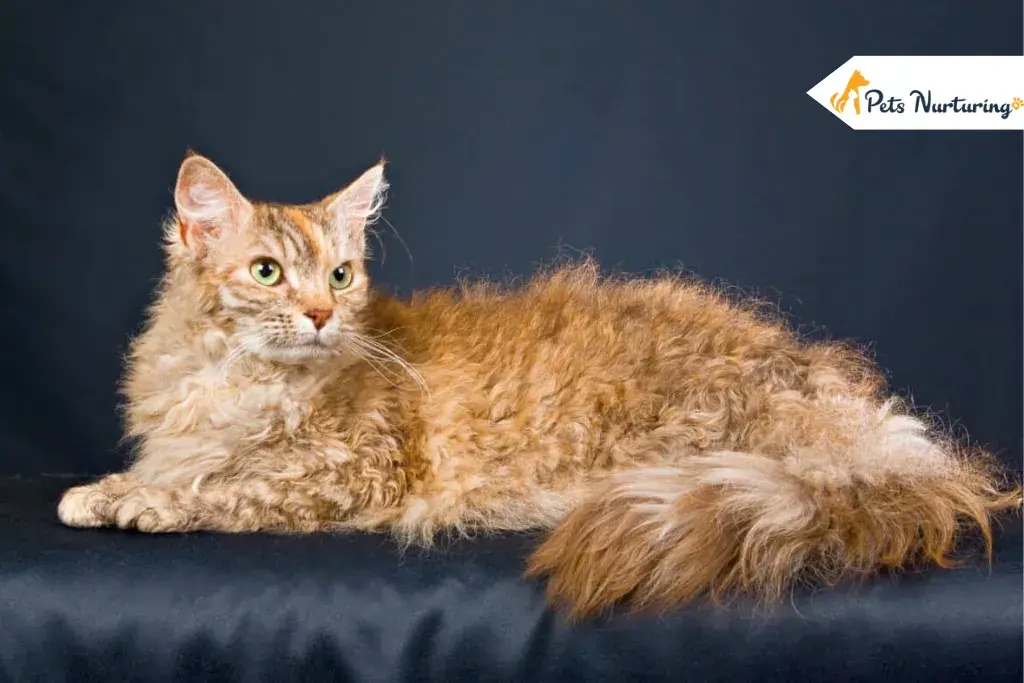
Curly fur cat breeds have become very popular in recent times because when it comes to fluff, the more, the merrier it is! Curly haired breeds are eye candy and include some extremely good-natured and beautiful felines. They are both a bit unusual as well as unique since very few cats have this characteristic trait. Let’s see curly haired cat. Curly hair cat breeds are extremely rare and have at least one layer of their natural coat missing in most cases. They are also known as ‘poodle cats’ as the curly coat provides them with some resemblance to poodles.
Cats come in all shapes and sizes and we love the kitties irrespective of their looks, but naturally, all cats have straight and smooth hair coats. So do you wonder what caused these kitties’ hair to curl? Don’t worry, we have all the answers for you.
The curly haired characteristic is a cause of genetic mutation which is a genetic quirk found in many mammals other than cats which may include dogs, horses, rabbits, etc. The Rex mutation is what results in soft curls in the animals as it leads to changes in structure and cross-section of individual hair of the animals which as a result leads to the curly appearance of the fur.
History of the Curly Haired Kitties
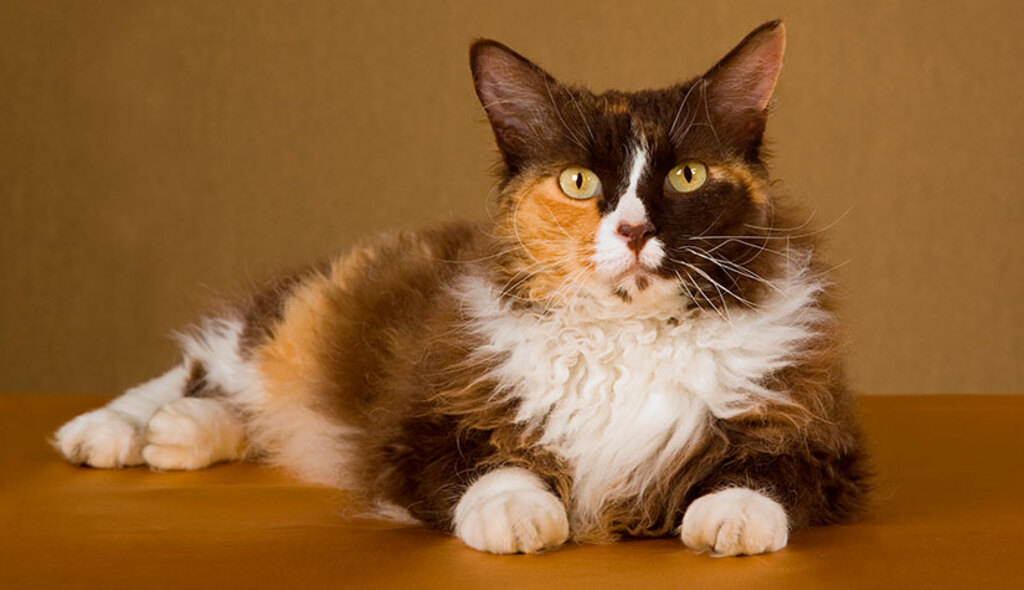
Curly coats in animals are referred to as rexed coats and are rare to find. Even Though cats with this characteristic existed for a very long time, it was hard to breed them for this particular trait and pass it on to the further generations until a cat breeder in Montana found a curly haired cat and bred her to make Selkirk rex, which became the most easily breedable cat for the curly hair trait.
Jeri Newman, a cat breeder in Montana, adopted the curly haired cat named Agnes DiPesto from the Montana shelter and paired her with another cat who had straight hair. The two cats produced a litter of six wherein three kittens showed the presence of curly fur and the other three showed straight hair which proved that only one parent needs to possess this characteristic for it to be passed on to the offspring. The kittens with straight hair will lack the Rex gene. This phenomenon is known as autosomal dominance. All Selkirk Rex cats have Agnes DiPesto as their common ancestor. You can also check this out about How to Understand Your Cat Better Way.
The autosomal dominance meant that any kitten coming from Agnes DiPesto will have a 50% chance of having her curly hair. Kittens born with curly hair were named Selkirk Rex. This is how the Selkirk Rex came into existence and got officially recognized by The International Cat Association.
Things To Know
The existence of the other three Rex cat breeds pre-date the Selkirk Rex. The Cornish Rex was the first of four curly haired breeds of cat to be successfully bred. They were introduced in the 1950s and are known to carry a recessive gene for this trait meaning both the parents need to have this trait for the offspring to be born with similar curls unlike the case of Agnes DiPesto. The curls on Cornish Rex are due to the missing guard hairs.
Just like the Cornish Rex, Devon Rex carries the curling trait on the recessive gene but other than that they are pretty different. They look very unique and the first of them was born in the 1960s. They are one of the smallest breeds of cats.
The fourth cat breed to show the presence of curly hair is not one of the Rex class. They are known as the LaPerm and were firstborn in the 1980s. They were the first to have the curly hair trait on a dominant gene but somewhat lacked the fur that gave an overall curly appearance.
Where to Find Them and How Much They Cost
They are extremely rare to find so you’ll have to find a reputable breeder as these cats are seldom found on streets or in your local shelter. Even after you manage to find one of these curly haired cats, expect them to cost you around 1000$ (74000 INR) to 1500$ (110000 INR).
What Makes Up a Cat’s Coat?
A typical domestic cat has three different layers of hair and any one of the missing may lead to the occurrence of a curly coat except in Selkirk Rex as they show the presence of all the layers. Three different types of hair are namely guarded hair, awn hair, and down hair. Guard hairs make the outermost layer and provide insulation and water resistance to the cat by not allowing water to reach their skin. They are usually straight and stiff. Awn hair makes the middle layer of the coat and they’re comparatively softer and thicker than the outer cat. Down hair makes the undercoat which is soft, extremely fine, and short.
Some Rex breeds completely lack the undercoat, like Devon Rex whereas the Selkirk Rex has short or long hair types and a dense coat. The curly haired cats that breed for this trait are extremely rare but some do exist. There are 4 known curly hair breeds of cats and the majority are from the Rex class.
Many cat lovers hold themselves back from getting a cat due to the allergies they may experience because of cat hair. For such people, curly haired breeds are a go to as they barely shed or do not shed at all. Most of them even classify as hypoallergenic.
Fun Fact: Curly haired cats often have curled eyebrows and whiskers, isn’t that adorable?
How to Care for the Curls ?
A cat’s coat is one of the best indicators of their health. Cats are very particular about grooming themselves so do we need to interfere? YES. Most of the time cats are excellent at grooming themselves but some extra help from us may prove extremely beneficial to them.
You should brush your curly haired queen four to five times a week. Brushing your cat helps them get rid of loose hairs, hence, reducing the chance of your cat getting an intestinal obstruction caused by a hairball. A hairball is formed when a cat grooms herself and ingests large numbers of loose hairs while doing so.
Regular brushing also helps in better circulation by acting upon the blood capillaries close to the skin. It also helps in toning their muscles and stimulates the sebaceous glands to secrete more oil to keep the fur smooth, shiny, and water-resistant. Grooming your cat regularly helps them get rid of dust, dirt, dry skin, and tangles, thus reducing the frequency of bathing.
You will also need to bathe and trim your cat’s hair as per need. Curly haired cats need to be bathed more often compared to ones with straight hair. It’s better to leave these tasks to the groomers if your cat doesn’t like it or you aren’t able to do it comfortably and efficiently.
Important Tips
Grooming your cat also helps you to know if they have any external parasites like ticks, fleas, etc that may harm your kitty’s health. It also helps in finding out the presence of any redness, inflammation, or infection to the skin as well as any allergic reactions or lumps.
You need to start grooming early on to get your cat used to the process and with some treats and love, your cat may even begin to love it in no time. Grooming can also prove to be an activity where you spend quality time and bond with your cat. For denser and tighter curls use a specific hairbrush made for a curly coat.
Let’s Get to Know the Curly Fur Cat Breeds Better!
Selkirk Rex
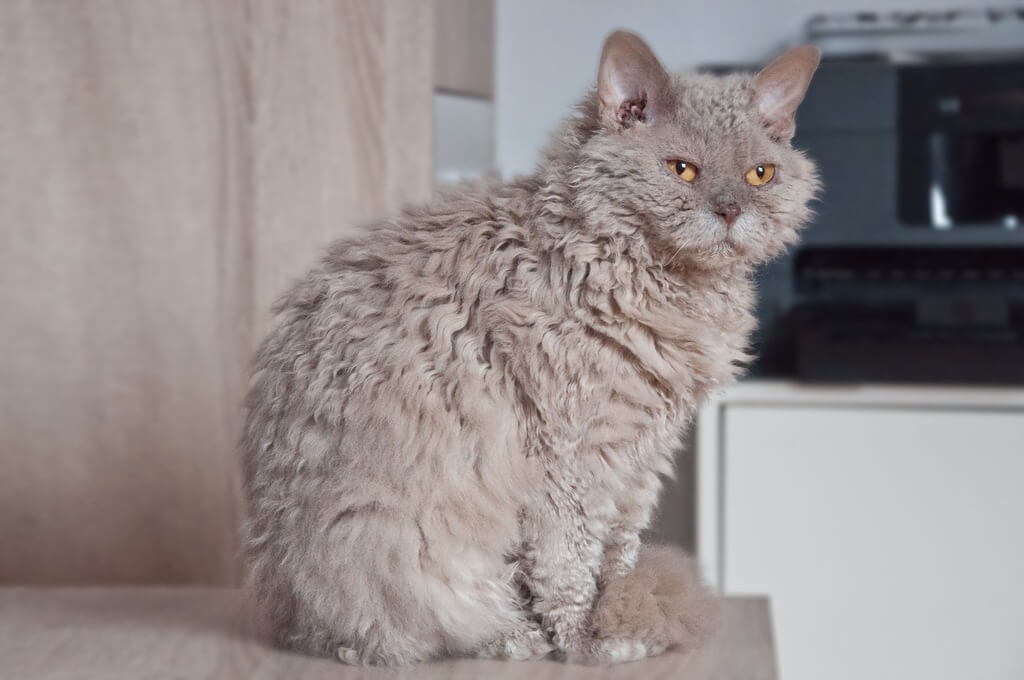
They are a large breed of cats weighing around 3 to 6 kg with round heads and strong limbs. They have long curls which give a wool-like appearance to the coat making them very distinguished in looks. They may even have wavy brows and whiskers.
Their ancestry can be traced back to Agnes. They are indoor cats and don’t enjoy spending a lot of energy outdoors. Selkirk Rex is not very affectionate but makes for lovely house cats with their teddy bear-like exterior. These confident-natured cats shed frequently and need regular grooming. They are also referred to as poodle cats due to their curly wool-like fur.
The coat color of a Selkirk rex can be white, black, cream, or chocolate showing different shades and patterns. As I mentioned earlier in their history that they were first bred by Jeri Newman, in his stepfather’s honor he named the breed after him as Selkirk Rex. They are playful and intelligent cats and require mental as well as stimulation. They may follow you around but aren’t very vocal.
They are known to be robust and healthy cats but may be genetically predisposed to some conditions if they aren’t bred cautiously. Some of the common concerns are polycystic kidney disease and hypertrophic cardiomyopathy.
The lifespan of Selkirk Rex Cats: 15-16 years
Devon Rex
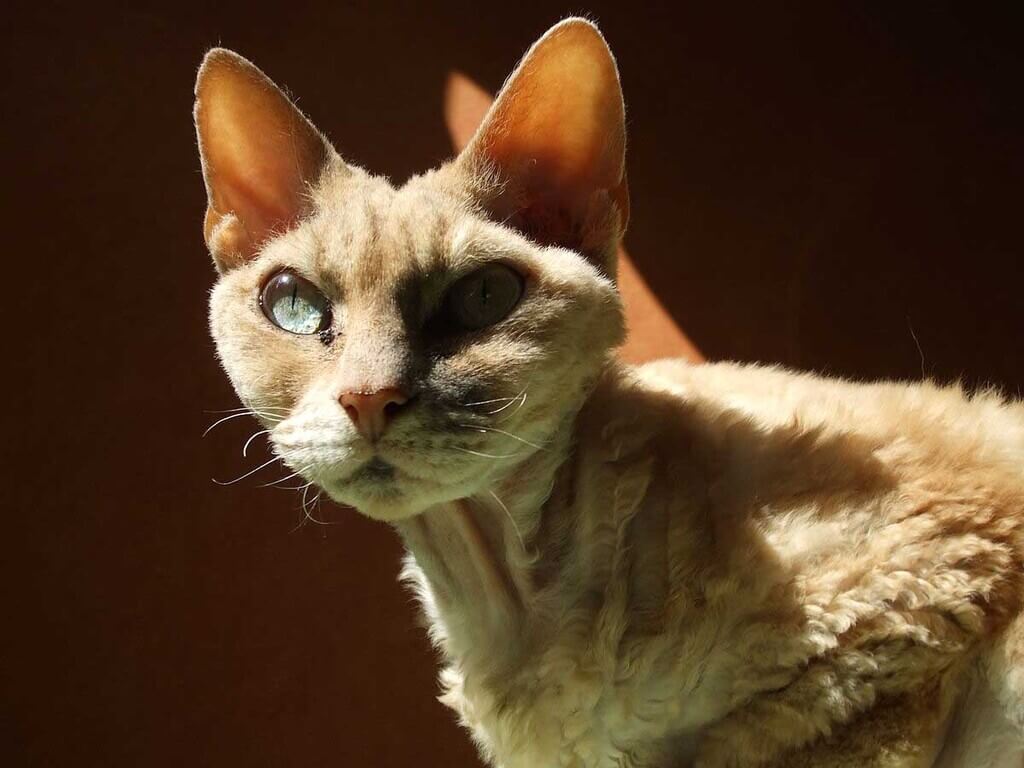
Devon Rex is an unusual-looking cat also known as pixie cats or alien cats due to their large ears and eyes, long legs, and slender body weighing around 3 to 5 kg. Their place of origin is Devon, the UK hence the name. They are famous for their unique look and intelligence. They are known to recognize theirs as well as their owner’s name.
They have a thin layer of guard coat in addition to a wavy undercoat and show minimal shedding. They have tight curls and short whiskers. They have short hair and a fragile coat which is prone to have patches of balding caused by overgrooming. They are not hypoallergenic as opposed to popular belief.
They are extremely playful and affectionate. Devon Rex is people-oriented and craves attention. They need interactive toys and a lot of playtime with their humans to keep them enriched. They love to learn tricks, play fetch, go for walks on a leash, and be lap cats. Their characters make them very much dog-like.
They have long legs and large toes that enable them to take high leaps. Devon Rex has a wide variety of coat colors like black, white, red, cream, lavender, chocolate, and fawn with different shadings and patterns.
Although they may not develop any of the following, the commonly occurring conditions include congenital hypotrichosis, hemophilia, Devon Rex myopathy, and Malassezia patchy dermatitis.
The lifespan of Devon Rex cats: 10-13 years
Cornish Rex

They look so much like the Devon Rex that they were once thought to be related. They weigh around 3 to 4 kgs. The most striking feature of a Cornish Rex is its fur coat. They lack guard and awn hair showing the presence of only the undercoat. Their place of origin is Cornwall, UK.
They are indoor cats and the presence of only the soft undercoat makes them vulnerable to changes in weather and temperature. They cannot tolerate heat or any extremes in temperature. They don’t shed so you are less likely to have allergies.
They are agile, athletic, and active making them an amazing and fun companion as they can play endlessly. They love to run around and climb. They are affectionate and do not do well if left alone for long hours. They love to learn tricks and go on walks. They get along with people, timid children, and other pets in the house. They easily adapt to new environments.
Cornish Rex exhibits coats of various colors like black, white, red, tabby, cream accompanied with various patterns and shades. They have a good appetite due to high activity levels but make sure you do not overfeed them.
Cornish Rex is to be kept indoors as they only have an undercoat which makes them vulnerable to hypothermia and hyperthermia if left in cold or hot temperature respectively. They may also have a genetic predisposition to hypertrophic cardiomyopathy.
The lifespan of Cornish Rex Cats: 9-13 years
La-Perm
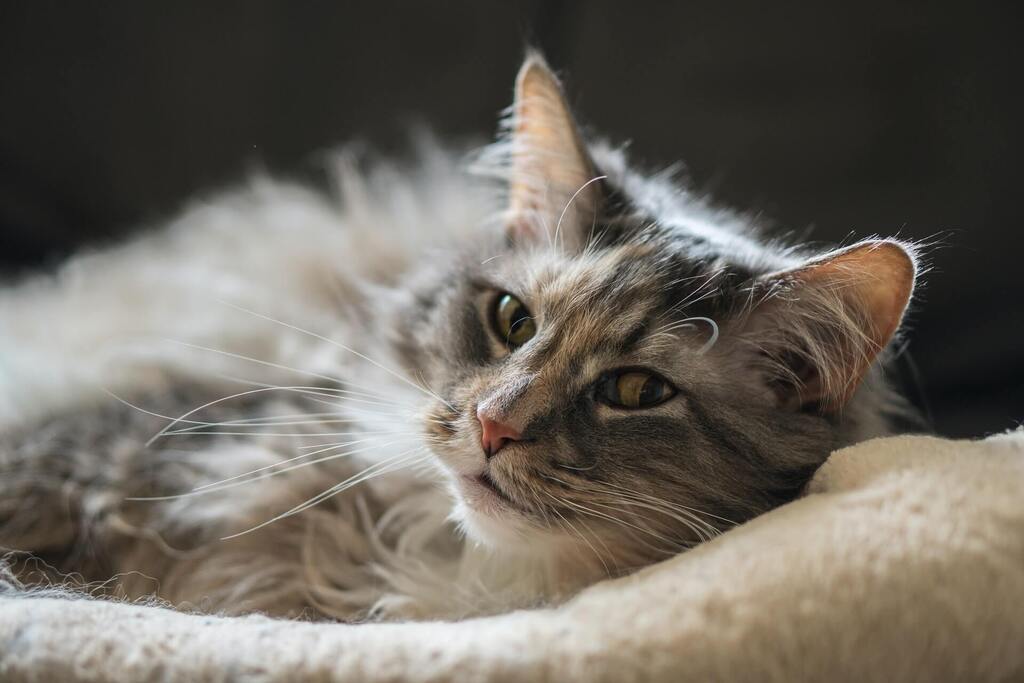
LaPerm has a characteristic mane consisting of wavy hairs and ringlets. They come in long and short coat varieties. Kittens may lose their curls and grow them back when they are around ten months old. Long-haired varieties have a fluffy plumed tail while the short-haired ones have a bottle brushtail.
They have almond-shaped eyes and curly whiskers. Their origin can be traced back to Oregon. They look like they just got out of bed because of their tangled and matted hair. They weigh around 3 to 5 kgs.
LaPerm is known to be extremely affectionate. They adapt to their owners’ personalities and are equally happy to be active as to be a lap cat. They coexist well with children and other pets, love to perform tricks or play fetch like a dog. Due to their affectionate and social nature, they do not do well if left alone for long periods.
LaPerm exhibits a wide variety of coat colors including black, white, chocolate, cream, fawn, tabby with various markings, shades, and patterns. Currently, there aren’t any serious illnesses associated with this breed of cat but you are advised to get them from a reputable breeder only.
The lifespan of LaPerm Cats: 10-15 years
There are other developing and lesser-known cat breeds like German Rex, Tasman Rex, Ural Rex, and rexed varieties of Persians, Maine coons, and other breeds. Cats come in all forms, colors, and patterns and you can choose the one that suits you best. No matter which cat you choose, they are adorable and will make you fall in love with them.
Keep Reading:








